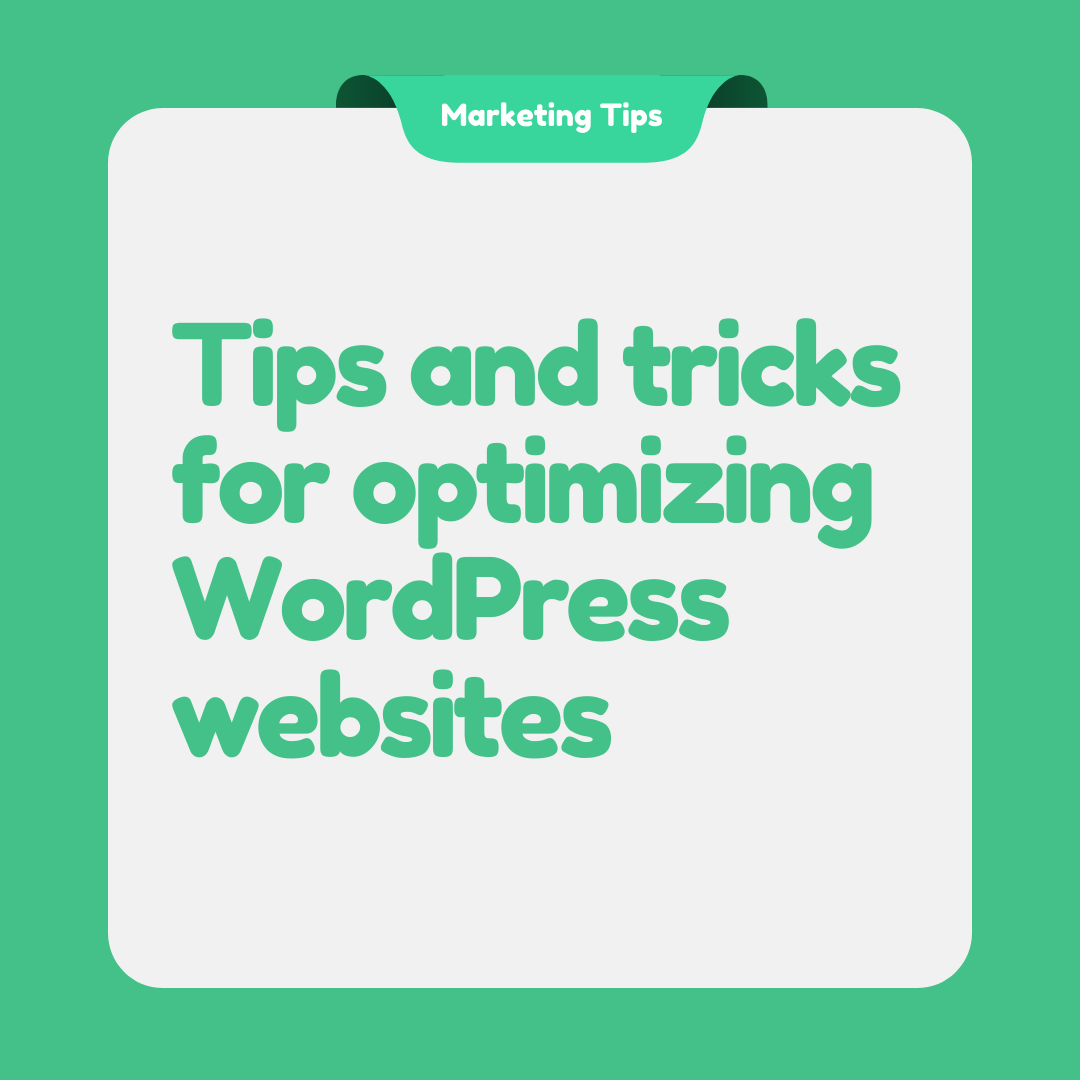Share Tips and Tricks for Optimizing WordPress Websites for Maximum Impact
Share Tips and Tricks for Optimizing WordPress Websites for Maximum Impact
Optimizing a WordPress website for maximum impact is crucial in today’s competitive digital landscape. With the right strategies, you can enhance your site’s performance, boost user engagement, and achieve higher search engine rankings. Here, we share comprehensive tips and tricks that will help you optimize your WordPress website effectively.

1. Choose the Right Hosting Provider
Selecting a reliable hosting provider is fundamental to your website’s performance. A good host ensures fast load times, minimal downtime, and robust security. Consider providers like SiteGround, Bluehost, or WP Engine, which are known for their optimized WordPress hosting solutions.
2. Use a Lightweight Theme
Themes greatly affect your site’s speed and performance. Opt for a lightweight theme such as Astra, GeneratePress, or Neve. These themes are designed to be fast and flexible, offering clean code and minimal bloat.
3. Implement Caching Solutions
Caching can significantly improve your website’s load times. Use plugins like WP Super Cache or W3 Total Cache to cache your pages and reduce the server load. This ensures that your website delivers content quickly to users.
4. Optimize Images for Faster Loading
Images can slow down your site if not properly optimized. Use plugins like Smush or ShortPixel to compress images without losing quality. Additionally, serve images in next-gen formats like WebP for faster loading times.
5. Minify CSS, JavaScript, and HTML
Minifying your site’s code can drastically improve loading speeds. Use plugins like Autoptimize or WP Rocket to minify CSS, JavaScript, and HTML files. This reduces the file sizes and ensures quicker rendering of your web pages.
6. Leverage a Content Delivery Network (CDN)
A Content Delivery Network (CDN) distributes your site’s static files across multiple servers worldwide. This ensures faster content delivery to users based on their geographic location. Popular CDN services include Cloudflare, MaxCDN, and Amazon CloudFront.
7. Enable GZIP Compression
Enabling GZIP compression reduces the size of your web pages and stylesheets, allowing them to load faster. Most caching plugins offer GZIP compression options, or you can enable it through your hosting provider.
8. Optimize Your Database
Regularly clean and optimize your database to maintain optimal performance. Use plugins like WP-Optimize or Advanced Database Cleaner to remove unnecessary data, such as post revisions, spam comments, and transient options.
9. Implement Lazy Loading
Lazy loading ensures that images and videos only load when they appear in the user’s viewport. This technique reduces initial load time and bandwidth consumption. Plugins like Lazy Load by WP Rocket or a3 Lazy Load can help you implement this feature.
10. Utilize Schema Markup
Schema markup helps search engines understand your content better, leading to enhanced search visibility and rich snippets. Use plugins like Schema Pro or Yoast SEO to add structured data to your website effortlessly.
11. Enhance Website Security
Security is paramount for maintaining user trust and protecting your site from malicious attacks. Use plugins like Wordfence or Sucuri to implement robust security measures, including firewalls, malware scanning, and login protection.
12. Improve Mobile Responsiveness
With the increasing use of mobile devices, ensuring your site is mobile-friendly is crucial. Use a responsive theme and test your site’s mobile performance with Google’s Mobile-Friendly Test. Optimize touch elements and ensure fast mobile load times.
13. Optimize Your Permalinks Structure
A clean and logical permalink structure improves both user experience and SEO. Use the Post Name format (e.g., yourwebsite.com/sample-post/) for clear and descriptive URLs. Avoid complex and lengthy URLs that can confuse users and search engines.
14. Focus on Quality Content
High-quality, relevant content is the cornerstone of SEO. Regularly update your blog with well-researched articles, tutorials, and guides that provide value to your audience. Use keywords naturally and maintain a consistent posting schedule.
15. Utilize Internal Linking
Internal linking helps distribute link equity across your site and improves user navigation. Link to relevant articles and pages within your content to enhance SEO and keep users engaged longer. Tools like Yoast SEO can help identify internal linking opportunities.
16. Leverage Social Media Integration
Integrating social media with your WordPress site can boost your content’s reach and engagement. Use plugins like Social Snap or Monarch to add social sharing buttons and automate social media posts.
17. Regularly Update Plugins and Themes
Keeping your WordPress core, themes, and plugins updated is crucial for security and performance. Regular updates ensure that your site has the latest features, bug fixes, and security patches.
18. Monitor Site Performance
Regularly monitor your site’s performance using tools like Google Analytics, Google Search Console, and GTmetrix. These tools provide insights into your site’s traffic, performance, and potential issues, allowing you to make informed optimizations.
19. Optimize for Voice Search
Voice search is becoming increasingly popular. Optimize your content for voice search by focusing on conversational keywords, answering common questions, and using structured data to enhance your content’s visibility in voice search results.
20. Engage in Regular Backlink Building
Building high-quality backlinks from reputable sites boosts your site’s authority and search rankings. Engage in guest blogging, content collaborations, and outreach campaigns to acquire valuable backlinks.
By implementing these tips and tricks, you can significantly enhance your WordPress website’s performance, user experience, and search engine visibility. Consistent optimization and staying updated with the latest trends are key to maintaining a high-impact website.
